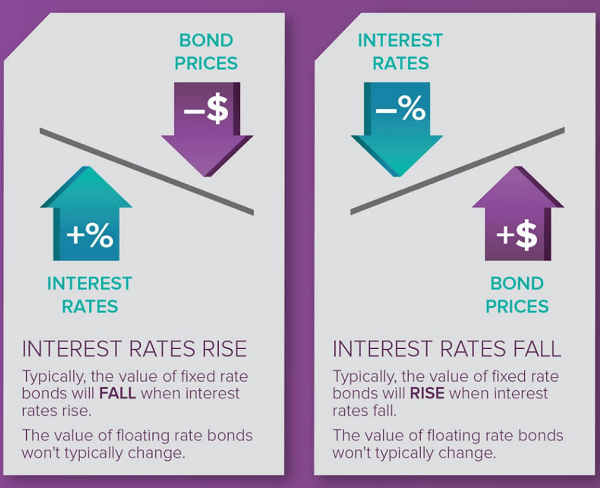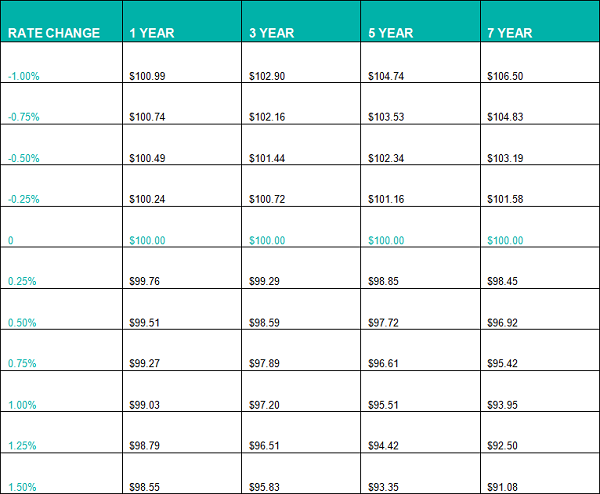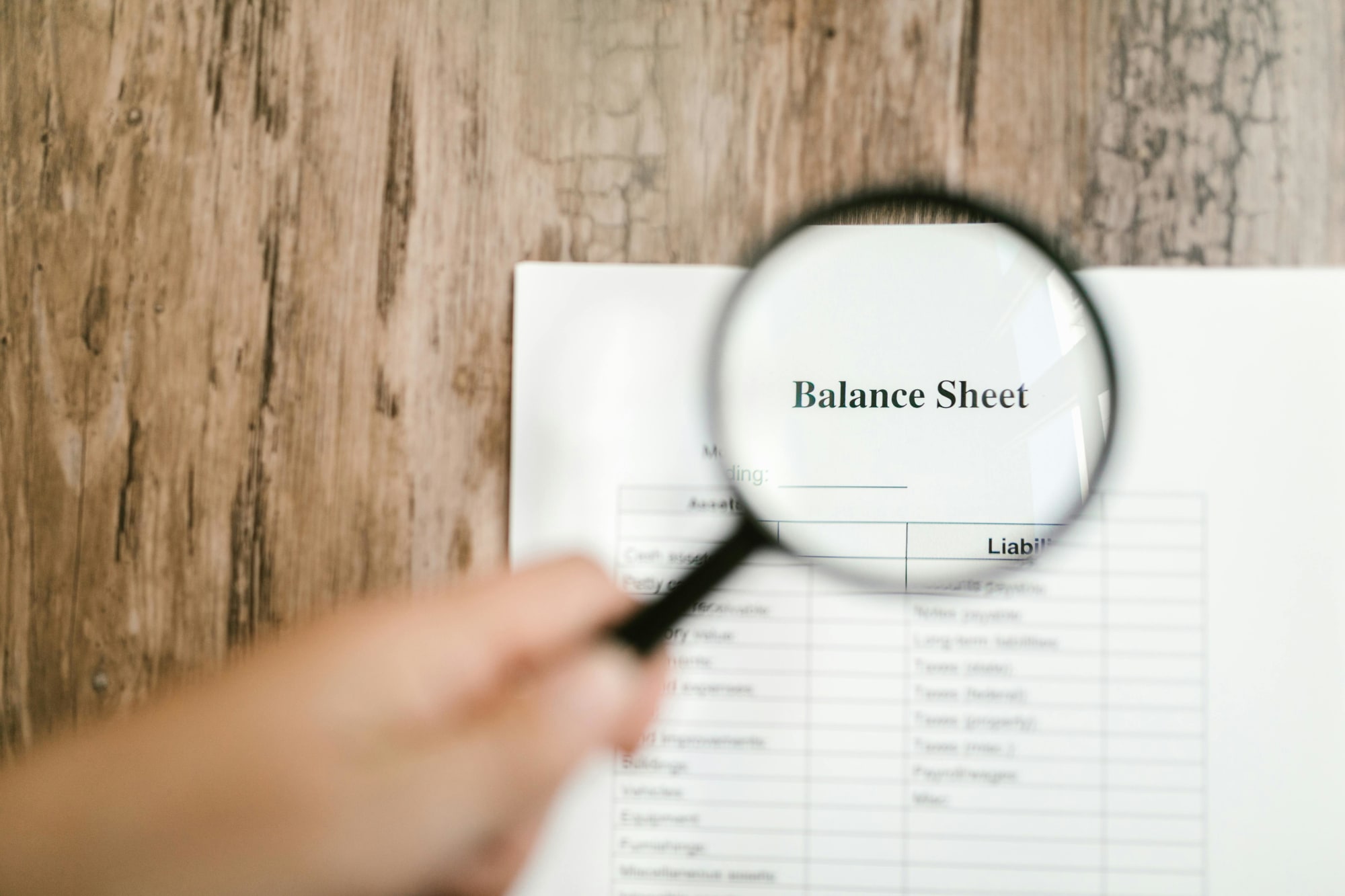Invest
Price and yield: an inverse relationship for bonds
Fixed income is a major asset class which attracts numerous investors for a multitude of reasons, but understanding the relationship between a bond's price and its yield can be difficult for many. Richard Murphy from XTB explains how the two work and what a change in yield actually means.
Price and yield: an inverse relationship for bonds
Fixed income is a major asset class which attracts numerous investors for a multitude of reasons, but understanding the relationship between a bond's price and its yield can be difficult for many. Richard Murphy from XTB explains how the two work and what a change in yield actually means.

Rising share prices and property values make for happy investors. An increase in interest rates results in higher term deposit rates and again, investors are pleased. An increase in bond yields, however, can often leave investors confused and uncertain about the impact on their bond investments. So let’s look at the relationship between bond yields and prices.
The price is right
There are two components to be aware of when you buy a bond – its price and its yield.
When an investor buys a bond, they’re effectively making a loan to that government or corporation. In return for borrowing the investor’s capital, the bond is repaid in a specified time period and, for the duration of the loan, the investor is rewarded with regular coupon (or interest) payments.

Coupons are set with regard to the prevailing interest rates at the time, and for corporate bonds, the yield (or the amount an investor should realise on the bond) is generally higher than the cash rate.
This makes the bond a more attractive investment than a term deposit.
If you buy a bond at issue and hold it through to maturity, the investment will not be affected by changes to interest rates. As illustrated in Figure 1, coupon payments remain the same for the duration of the investment, and at maturity, the principal investment is repaid.
Figure 1: A bond bought at issue and held to maturity

Interest rates and bond prices
A buy and hold strategy is straightforward. However, if you wish to buy (or sell) a bond on the secondary market (i.e. after it has been issued), the relationship between the bond’s price and its yield becomes important.
This relationship is sometimes depicted as a see-saw – as one rises, the other falls. As illustrated in Figure 2, the two factors have an inverse relationship; in other words, a bond’s price moves in the opposite direction of its yield.
This is no different to dividend yields on shares. If a $1 share pays a 5 cent dividend, then its dividend yield is 5 per cent. If the share price rises to $2, then the dividend yield for a 5 cent dividend becomes 2.5 per cent. Price and yield move in opposite directions.
Figure 2: the effect of interest rates on bond yields and bond prices

The price of a bond reflects the value today of the income it provides via regular coupon or interest payments and the repayment of the principal. When interest rates fall, bonds are still paying the same coupon rate, so they become more valuable and will generally trade at a higher price.
When interest rates rise, new term deposits and bonds issued after the rise will start paying investors higher rates than existing older bonds that are still paying the same coupon rate. Therefore the price of older bonds will generally fall.
How does this work in practice?
What is important to note is that fixed rate bonds are sensitive to changes in interest rates, while floating rate bonds do not have the same sensitivity. However, while equities and hybrid investments can move up or down by 5 per cent or more, senior corporate bonds from well-capitalised and creditworthy ASX top 100 listed companies are not as volatile, unless interest rates move very dramatically.
The following table shows the price sensitivity of $100 Face Value bond units on ASX for a given interest rate change. It shows that long-dated corporate bonds are more sensitive to interest rate changes than short-dated ones (using data on exchange traded bond units, or XTBs).

In summary
While changes in interest rates may be a cause for concern for bondholders if they don’t hold to maturity, bonds do not exhibit the high levels of volatility seen in equities markets. Therefore corporate bonds remain a good source of both income and capital stability for investors seeking more defensive investments.
Richard Murphy is the co-founder and chief executive officer of XTB, a company which specialises in exchange-traded bonds.

Investment insights
Investors maintain cautious stance amid data uncertainty
Amidst the backdrop of a US government shutdown and lingering economic uncertainties, investors have adopted a neutral stance, as revealed by the latest State Street Institutional Investor IndicatorsRead more

Investment insights
State Street's 2026 global market outlook anticipates cautious growth with strategic investment shifts
State Street Investment Management, the world's fourth-largest asset manager, has released its much-anticipated 2026 Global Market Outlook (GMO) report titled "Forward with Focus." The report provides ...Read more

Investment insights
J.P. Morgan strategists highlight Australia as a key investment destination amidst global uncertainties
Amidst a backdrop of fluctuating energy prices, J.P. Morgan Private Bank strategists have identified Australia as a beacon of opportunity for global investors, particularly within its fixed income and ...Read more

Investment insights
HarbourVest Partners unveils new private equity benchmarks highlighting long-term outperformance
In a significant update for the private equity world, HarbourVest Partners, a leading global private markets investment firm, has released its quarterly private equity benchmarks, providing ...Read more

Investment insights
Mason Stevens strengthens UHNW offering through partnership with GloryHouse
In a strategic move set to bolster its position in the ultra-high-net-worth (UHNW) sector, Mason Stevens, a prominent name in Australia's wealth management landscape, has announced a partnership with ...Read more

Investment insights
Beyond the trophy: What the Women in Finance Awards 2025 signal for strategy, talent and ROI
Australia’s Women in Finance Awards have crowned their 2025 cohort, but the real story isn’t the stage—it’s the strategy. Recognition programs now function as market barometers, signalling which ...Read more

Investment insights
Orbis Investments challenges investors to rethink assumptions in 2026
In a bold move to reshape investor perspectives, Orbis Investments has released a new report titled "Six Courageous Questions for 2026," encouraging investors to critically evaluate their assumptions ...Read more

Investment insights
Rate relief on the horizon? How a November cut could reshape Australian balance sheets
With unemployment edging up to a multi-year high, markets are weighing whether the Reserve Bank will pivot to a rate cut as early as November. For CFOs and CEOs, the real question isn’t if a cut ...Read more

Investment insights
Investors maintain cautious stance amid data uncertainty
Amidst the backdrop of a US government shutdown and lingering economic uncertainties, investors have adopted a neutral stance, as revealed by the latest State Street Institutional Investor IndicatorsRead more

Investment insights
State Street's 2026 global market outlook anticipates cautious growth with strategic investment shifts
State Street Investment Management, the world's fourth-largest asset manager, has released its much-anticipated 2026 Global Market Outlook (GMO) report titled "Forward with Focus." The report provides ...Read more

Investment insights
J.P. Morgan strategists highlight Australia as a key investment destination amidst global uncertainties
Amidst a backdrop of fluctuating energy prices, J.P. Morgan Private Bank strategists have identified Australia as a beacon of opportunity for global investors, particularly within its fixed income and ...Read more

Investment insights
HarbourVest Partners unveils new private equity benchmarks highlighting long-term outperformance
In a significant update for the private equity world, HarbourVest Partners, a leading global private markets investment firm, has released its quarterly private equity benchmarks, providing ...Read more

Investment insights
Mason Stevens strengthens UHNW offering through partnership with GloryHouse
In a strategic move set to bolster its position in the ultra-high-net-worth (UHNW) sector, Mason Stevens, a prominent name in Australia's wealth management landscape, has announced a partnership with ...Read more

Investment insights
Beyond the trophy: What the Women in Finance Awards 2025 signal for strategy, talent and ROI
Australia’s Women in Finance Awards have crowned their 2025 cohort, but the real story isn’t the stage—it’s the strategy. Recognition programs now function as market barometers, signalling which ...Read more

Investment insights
Orbis Investments challenges investors to rethink assumptions in 2026
In a bold move to reshape investor perspectives, Orbis Investments has released a new report titled "Six Courageous Questions for 2026," encouraging investors to critically evaluate their assumptions ...Read more

Investment insights
Rate relief on the horizon? How a November cut could reshape Australian balance sheets
With unemployment edging up to a multi-year high, markets are weighing whether the Reserve Bank will pivot to a rate cut as early as November. For CFOs and CEOs, the real question isn’t if a cut ...Read more








